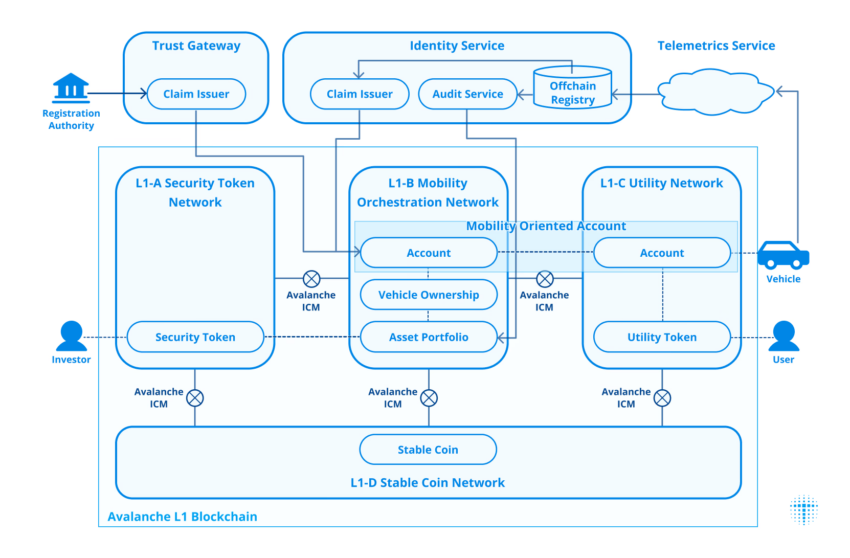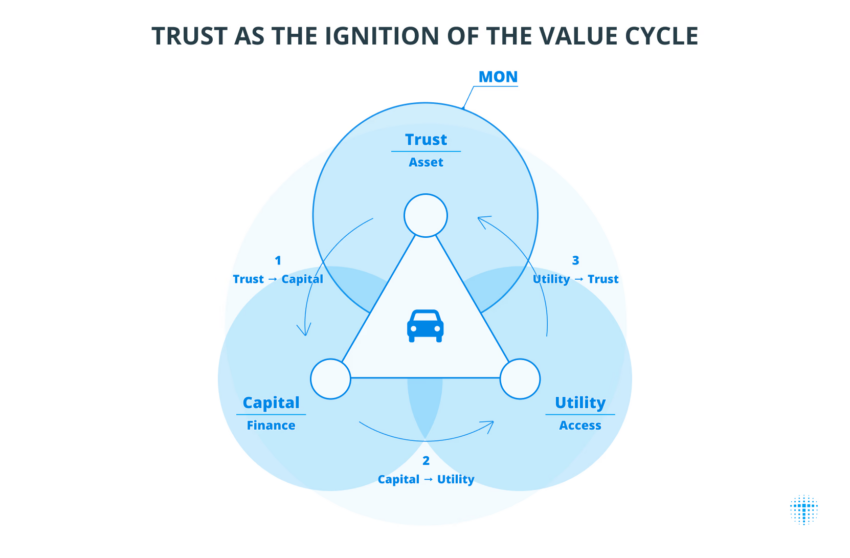Toyota’s Blockchain Breakthrough: Your Car Just Became a Tradeable Digital Asset
Forget dealerships—your next vehicle might trade like an NFT. Toyota just dropped a blockchain framework that turns physical cars into liquid digital assets.
How It Actually Works
The system tokenizes vehicle ownership on a distributed ledger. Each car gets a unique digital twin—tracking everything from maintenance history to accident reports. Ownership transfers happen through smart contracts, cutting out title paperwork and DMV headaches.
Why This Changes Everything
Suddenly, your sedan isn't just depreciating metal—it's a collateralizable asset. Lease-to-own models get automated. Fractional ownership becomes possible. And secondary markets? They just went global. The framework even handles usage-based insurance and carbon credit tracking.
The Fine Print
Regulators haven't blessed this yet—and good luck explaining to your grandma why her Camry needs a crypto wallet. The infrastructure demands dealership buy-in and massive consumer education. Plus, let's be real: most finance bros would rather tokenize meme stocks than actual productive assets.
Bottom line: Toyota's playing 4D chess while legacy automakers are still figuring out cup holders. Whether this revolutionizes auto finance or becomes another blockchain pilot cemetery—well, that's the billion-yen question.
Toyota Redefines Vehicles as Trust Networks
The proposal positions vehicles not as isolated assets but as nodes within a network of manufacturers, owners, insurers, operators, and regulators. MON aims to consolidate legal, technical, and economic proofs into verifiable digital identities linked to each vehicle through non-fungible tokens (NFTs).
Toyota said the system could enable investors to treat vehicle fleets as structured portfolios, later securitized into tokens. MON seeks to provide a transparent foundation for financing electric fleets, autonomous taxis, and logistics operations by linking vehicle ownership, usage, and maintenance records.
Avalanche’s architecture forms the backbone of MON’s prototype, chosen for its ability to deploy multiple interoperable L1 chains. Unlike most EVM-compatible platforms, Avalanche supports “infinite L1s,” allowing enterprises to segment networks for trust, utilities, securities, and payments. As Avalanche highlighted on X, this multi-chain design aligns with industries that demand scalability and compliance.
Naohiko Ueno, a Toyota Blockchain Lab contributor, emphasized the collaboration in his post:
Avalanche × TOYOTA Blockchain Lab
出ましたね。
くわしくは後ほど書きますが、今回Ava側はじめ多くの方のサポートで形になっています。個人的にはAvaのアンバサダーでもあるので、一歩踏み出した感があります。#Avalanche #ToyotaBlockchainLab https://t.co/3PRDVCGzy7
![]()
“Avalanche × TOYOTA Blockchain Lab. With strong support from many, this step became reality. As an Ava ambassador, it feels like we’ve truly advanced.”
BeInCrypto also reported that Avalanche’s enterprise adoption, including Toyota’s initiative, underlines AVAX’s undervaluation relative to its use cases.
How MON Works in Practice

The WHITE paper describes three “bridges” to overcome fragmentation:
- Trust Bridge – Bundles institutional proofs like registration, insurance, and compliance with technical attestations from OEMs and operational metrics. These form the foundation of each Mobility Oriented Account (MOA).
- Capital Bridge – Connects verified vehicle portfolios to finance networks, enabling tokenization into securities and unlocking capital inflows.
- Utility Bridge – Integrates real-world usage, from ride-hailing to charging logs, ensuring that operational results reinforce financial trust.
Toyota’s prototype runs on four Avalanche L1s:
- L1-A Security Token Network – Issues securities backed by vehicle portfolios.
- L1-B MON Core – Manages ownership rights and MOAs.
- L1-C Utility Network – Handles real-time vehicle operations.
- L1-D Stablecoin Network – Supports payments and settlements.
Key services include anto LINK real-world data with blockchain proofs and ato bridge off-chain institutional records, such as registrations or insurance certificates.
BeInCrypto previously covered Toyota’s broader Web3 experiments, including digital assets and metaverse initiatives, underscoring how MON builds on the group’s ongoing blockchain strategy.

Broader Implications for Mobility and Finance
Toyota said MON is not intended as a single global chain but a protocol enabling regional ecosystems to interoperate. Local MON instances WOULD respect national regulations using a common trust language for cross-border asset flows.
The lab highlighted the potential for MON to expand beyond financing, impacting secondary markets like used cars, leasing, and insurance by streamlining data verification. Toyota previously highlighted blockchain use cases through its affiliate KINTO, which began testing NFT-based SAFE driving certificates in May 2024.
While MON remains at the proof-of-concept stage, analysts note that Toyota’s MOVE marks one of the most detailed attempts to merge automotive assets with blockchain finance. MON could accelerate investment in electrification and autonomous mobility by anchoring trust across legal, technical, and economic domains.
As the Toyota Blockchain Lab stated:
“Mobility is not a static asset but a network of shared responsibilities. MON provides the foundation to extend this trust globally.”

